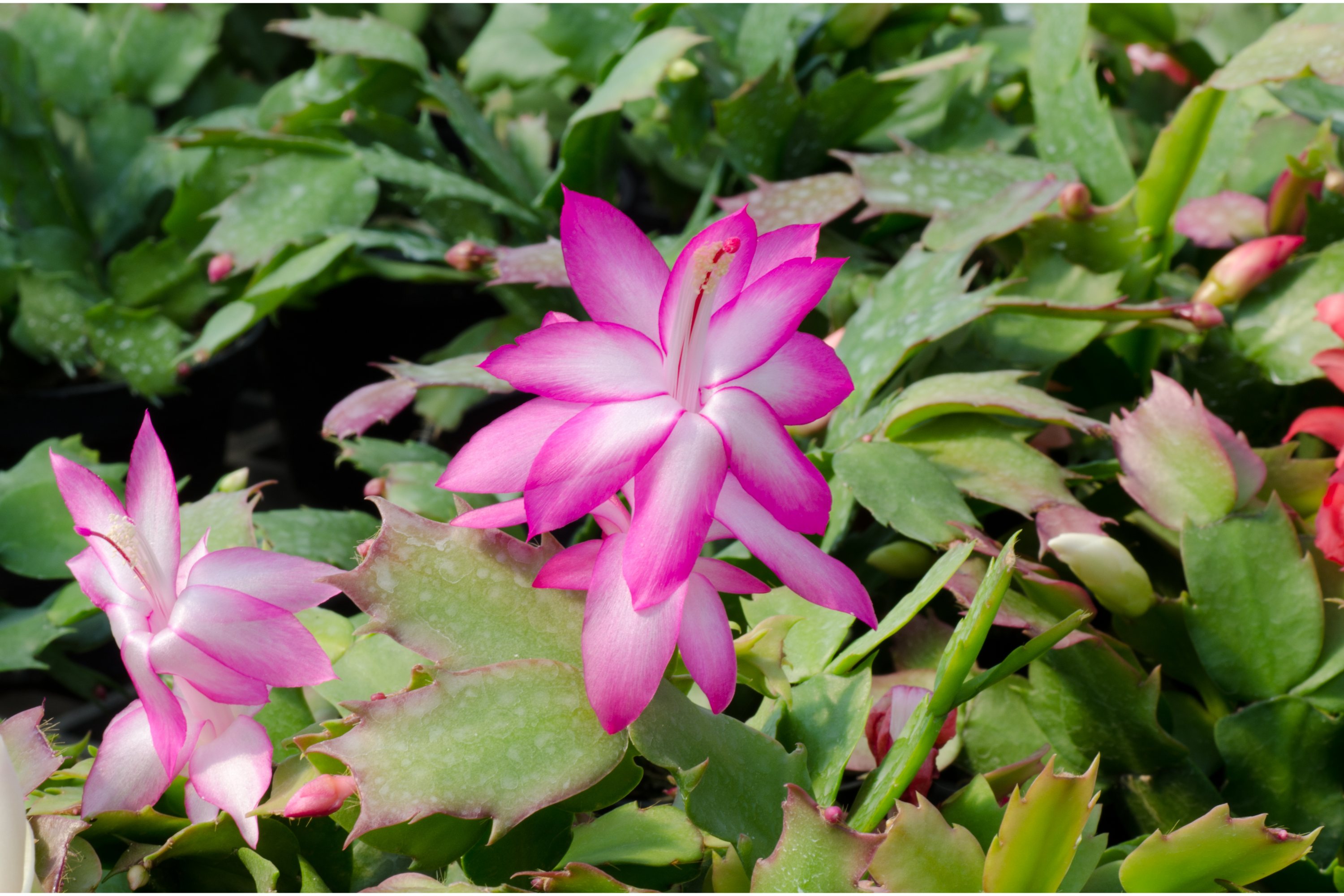Christmas cactus
(Schlumbergera russelliana)

Description
Schlumbergera russelliana is a species of cactus that belongs to the family Cactaceae. It is also commonly known as the "Christmas cactus" due to its tendency to bloom around the winter holidays. This species is native to the mountains of southeastern Brazil, where it grows as an epiphyte, clinging to trees and other surfaces rather than rooting in the ground. In this article, we will explore the characteristics and cultivation of Schlumbergera russelliana in detail. Taxonomy Schlumbergera russelliana is a member of the genus Schlumbergera, which comprises several species of cacti that are native to the coastal mountains of southeastern Brazil. The genus is named after Frederic Schlumberger, a French collector of cacti in the 19th century. The species name russelliana honors the English plant collector Charles Russell. Description Schlumbergera russelliana is an epiphytic cactus with flattened, segmented stems that can grow up to 40 cm in length. The stem segments are green and oblong in shape, with slightly scalloped edges. The stem segments are arranged in a zigzag pattern along the stem. The plant has no leaves, but its stem segments are covered in fine, hair-like structures called trichomes, which help it absorb moisture from the air. The flowers of Schlumbergera russelliana are its most distinctive feature. They bloom at the tips of the stem segments and are typically pink, though they can also be white, red, or orange. The flowers are bell-shaped and have numerous petals arranged in a radial pattern around a central stigma. The flowers are about 5 cm long and 6 cm wide. Cultivation Schlumbergera russelliana is a popular houseplant due to its attractive appearance and easy cultivation. Here are some tips for growing Schlumbergera russelliana: Light: Schlumbergera russelliana prefers bright, indirect light. It should be kept out of direct sunlight, as this can scorch the plant's leaves and stems. Temperature: Schlumbergera russelliana grows best in temperatures between 18°C to 24°C. It can tolerate slightly cooler temperatures but should be kept away from drafts or extreme temperature fluctuations. Watering: Schlumbergera russelliana should be watered regularly, but not excessively. The soil should be allowed to dry out slightly between waterings, as the plant is susceptible to root rot if kept in soggy soil. During the winter months, when the plant is in bloom, it may need to be watered more frequently. Humidity: Schlumbergera russelliana prefers high humidity levels. It can be misted regularly or placed on a tray of moist pebbles to increase the humidity around the plant. Soil: Schlumbergera russelliana should be planted in well-draining soil. A mix of peat moss, perlite, and sand is ideal. Fertilizer: Schlumbergera russelliana should be fertilized every two weeks during the growing season (spring and summer) with a balanced fertilizer diluted to half strength. Propagation Schlumbergera russelliana can be propagated through stem cuttings. Here are the steps for propagating Schlumbergera russelliana: Choose a healthy stem segment with at least two or three leaf segments. Allow the cutting to dry out for a day or two. Dip the cut end of the cutting in rooting hormone. Plant the cutting in a pot filled with well-draining soil. Water the cutting lightly and cover it with a plastic bag to create a humid environment. Place the pot in a bright, indirect light location, but not in direct sunlight. Keep the soil moist but not wet. Do not overwater the cutting as it may lead to root rot. After about 4 to 6 weeks, roots should start to form, and the cutting will begin to grow new leaves. Once the cutting has developed a good root system and several new leaves, it can be transplanted into a larger pot with regular soil. Continue to care for the newly propagated plant as you would with a mature Schlumbergera russelliana, following the guidelines for light, temperature, humidity, watering, and fertilizing.
Taxonomic tree:







